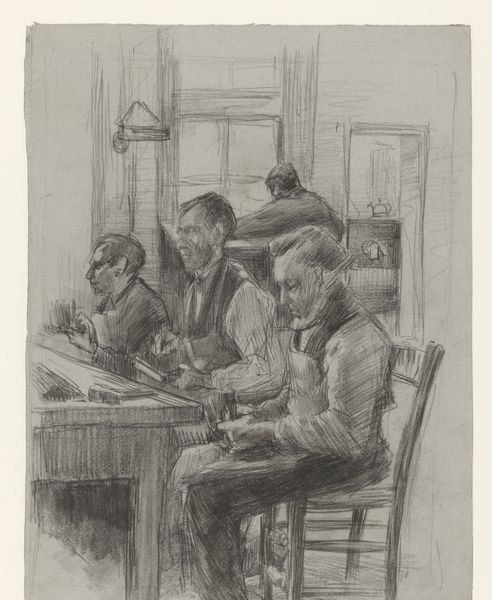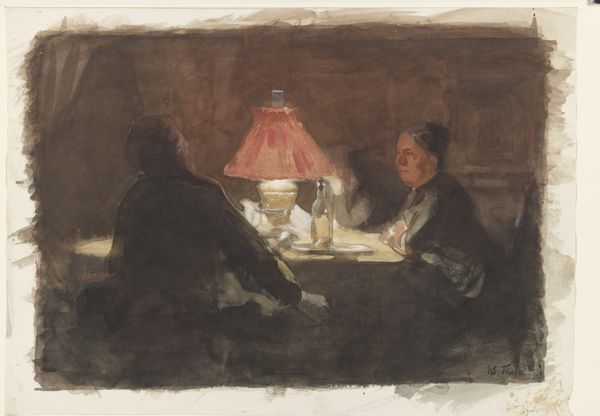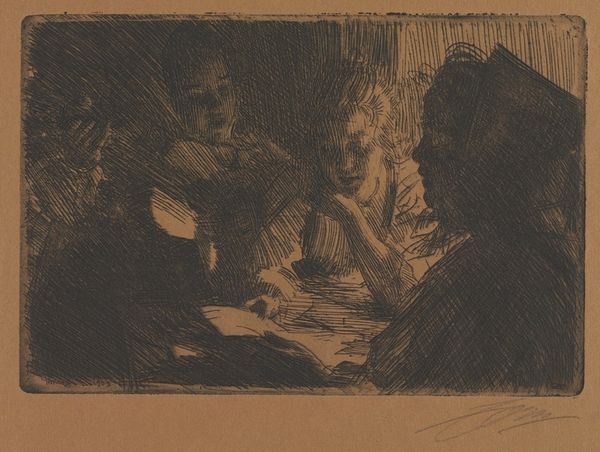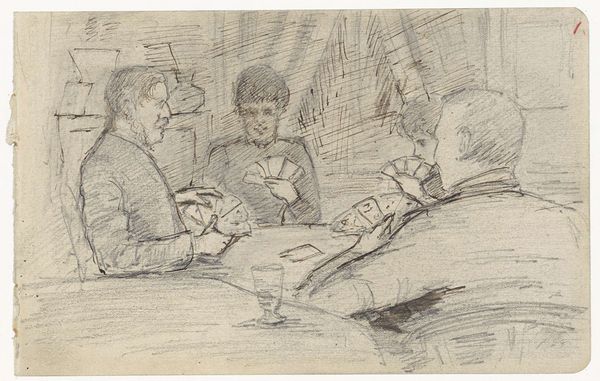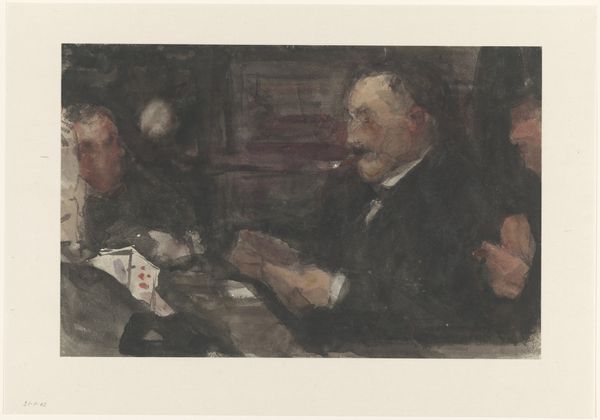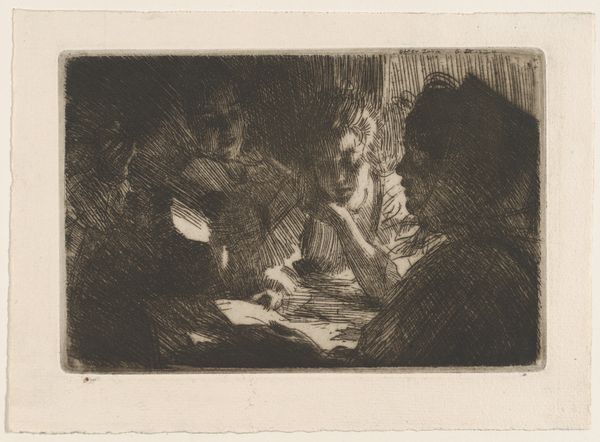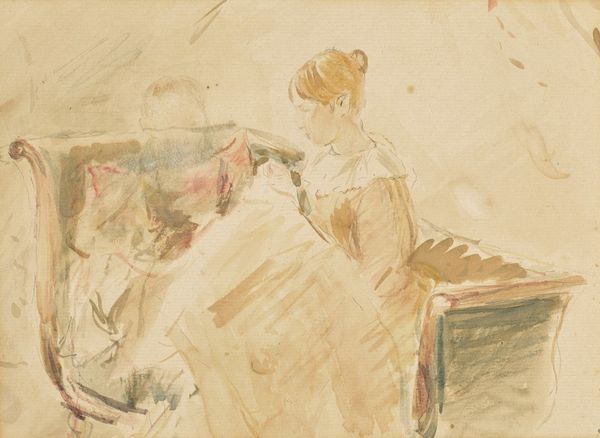
Dimensions: height 302 mm, width 424 mm
Copyright: Rijks Museum: Open Domain
Curator: This watercolor work, dating roughly from 1874 to 1945, is called "Groep mannen om een tafel," or "Group of Men Around a Table" and it is by Carel Adolph Lion Cachet. Editor: It has such a somber mood, doesn't it? All those greys and browns, only broken by the occasional touch of reddish hue, create a contemplative feeling. Curator: Exactly, that restricted palette amplifies the subject's significance, turning our attention towards the composition. There’s a remarkable tension between its rough impressionistic application and the meticulous articulation of each man's position around that central, obscured table. Editor: I am quite intrigued by this "obscured table." It seems the focal point. Could the table perhaps allude to production or assembly – is it at the very heart of the lives of those portrayed, dictating social dynamics and the rhythm of labour? Curator: The men dominate the space in the picture plane, don't they? You'll notice their presence is so palpable—even those relegated to the shadows contribute profoundly. One fellow even possesses an almost radiant scarf. It adds warmth, however small, to the group, hinting at identity amongst the gloom. Editor: I think this ties well into how art and societal status frequently went hand in hand, perhaps serving as proof of one's worth or cementing specific narratives about who was thought influential or crucial back then. So one might explore how Cachet subtly used materials here to enhance prestige. Curator: Absolutely. Notice the nuanced brushstrokes, especially within those blurred portraits and consider just how impactful the seemingly restrained touches truly are. Through such sophisticated treatment of something seemingly commonplace – men sharing time around a table – Cachet has captured a sense of something far grander. Editor: In essence, analyzing Cachet's watercolor work exposes a rich weave between visual form, representation and potential social commentary about labor, group dynamics and material significance during Cachet’s era, which enriches every encounter here within the Rijksmuseum today. Curator: An analysis providing viewers new layers of reflection. Thank you!
Comments
No comments
Be the first to comment and join the conversation on the ultimate creative platform.
